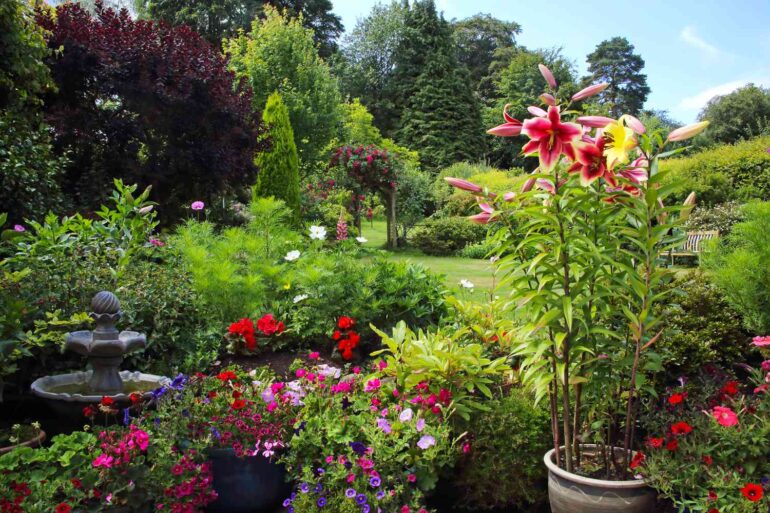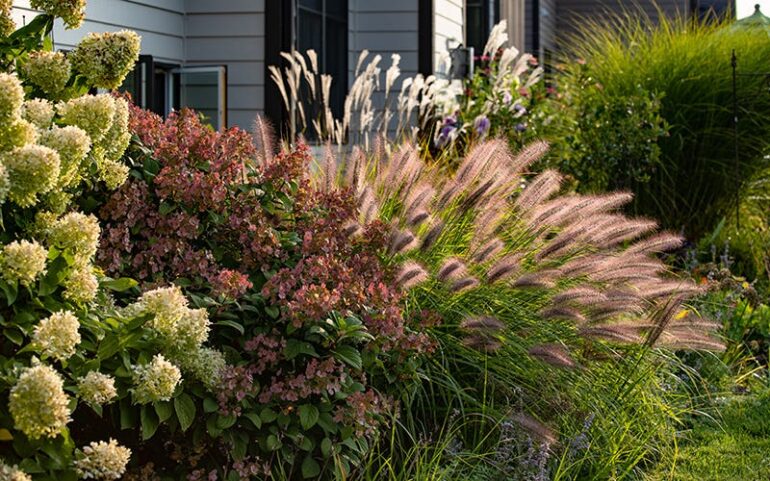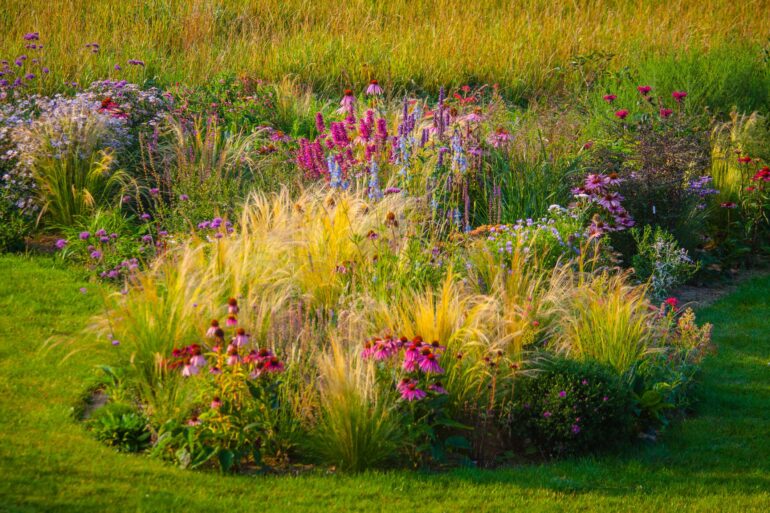Grasses have long been valued in agricultural and gardening practices for their durability, ease of care, and versatility. When used creatively, they can transform outdoor spaces into landscapes that balance beauty and functionality. Whether planting on a large estate or designing a small garden, the possibilities are endless when considering grasses for a project.
The focus should always be on making choices that complement both the aesthetic goals and practical needs of the space.
Key Points
- Choose the right grass species for your climate and soil.
- Consider the function of grasses in erosion control or drought resistance.
- Integrate grasses into existing plant designs for balance.
- Mix heights and textures for visual interest.
- Use them to create natural barriers and focal points.
1. Choosing The Right Garden Plants

Designing with grasses often starts with selecting the right species. They vary widely in terms of height, texture, and color. One essential aspect of garden design involves sourcing affordable and quality plant options. One good source where you can buy garden plants is Tree Nursery. They offer a broad selection of perennials and other plants that pair well with grasses, allowing gardeners to combine beauty with cost-effectiveness. Choosing the right supplier is key to ensuring both the health of your plants and the success of the overall design.
2. Consider Climate and Soil
Before making your pick, consider the local climate and soil conditions. Not all grasses thrive in the same environments, so matching the species to the specific landscape conditions is crucial. For dry or drought-prone areas, look for more drought-tolerant species like buffalo grass. Cooler climates often benefit from fescue varieties, known for their resilience in colder temperatures. Grass health relies heavily on its ability to adapt to the soil and weather. Failing to account for these factors may lead to disappointment later on.
3. Functional Considerations

They play an important role in erosion control and can prevent soil from washing away during heavy rains. For areas with steep slopes or loose soil, taller grasses like switchgrass or big bluestem can anchor the soil, providing stability. Similarly, they are perfect for filling gaps where other plants may not thrive, offering ground cover without requiring too much maintenance.
Beyond erosion control, they also provide natural windbreaks and privacy barriers. Tall, dense varieties can serve as screens to block views from neighboring properties or roads, offering a more secluded outdoor space.
4. Creating Visual Interest
A well-designed landscape should offer layers of visual interest, and grasses can help achieve this through variation in height, texture, and color. Combine taller species like maiden grass with shorter ground covers for a tiered effect. This layering technique adds depth to any space and draws the eye across the garden. Incorporate them with interesting seed heads or fall colors for added seasonal appeal.
Ornamental grasses like fountain grass or feather reed grass offer striking shapes that sway gracefully in the wind. The movement creates a sense of dynamism in the landscape, a feature that many other plants lack. Additionally, they can be paired with flowering perennials, shrubs, or even trees to add contrast and balance to the design.
5. Grass as a Focal Point

By planting a cluster of tall grasses in a prominent spot, you create a natural centerpiece for the garden. Adding a stone bench or water feature nearby can turn this focal point into a space for relaxation and contemplation. Simplicity often leads to the most dramatic effect, especially when they are thoughtfully placed.
In small gardens, they can be used to break up hard edges or soften pathways. When paired with natural stones or wood features, grasses offer an elegant transition between man-made structures and the surrounding greenery. For maximum impact, consider planting grass in mass, allowing it to create a visual blanket over a section of the landscape.
FAQ
1. Can grasses be mixed with other plants?
Yes, grasses pair well with perennials, shrubs, and trees. The key is choosing species that complement each other in terms of size and growth habits.
2. What maintenance do grasses require?
Most grasses need minimal care once established. Water them regularly during the first year, and cut them back in late winter to encourage new growth.
3. Are grasses suitable for small gardens?
Yes, grasses work in small spaces too. Use shorter species as ground cover or to soften pathways, and plant taller grasses strategically for added height and texture.
Designing with grasses allows for creativity while serving a functional purpose. Whether the goal is to control erosion, create natural screens, or simply add movement and texture to a garden, they offer versatile solutions. Choosing the right species and planting with intention leads to a beautiful and functional landscape every time.
